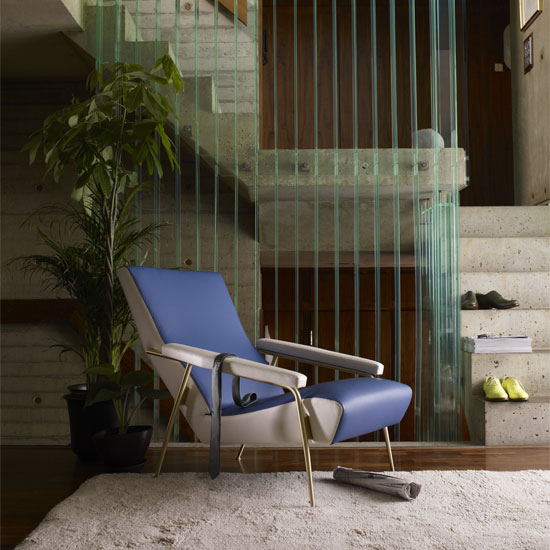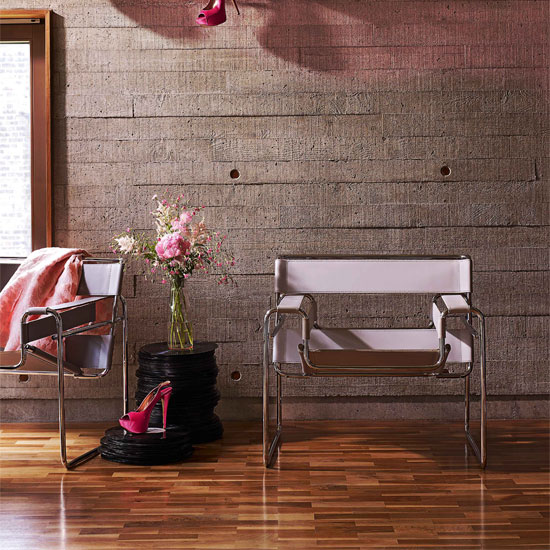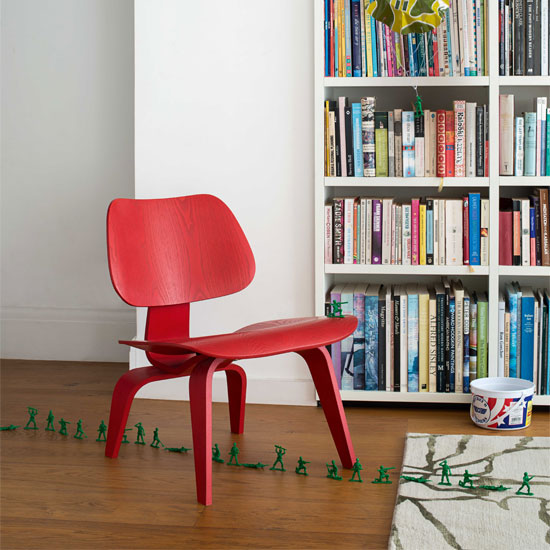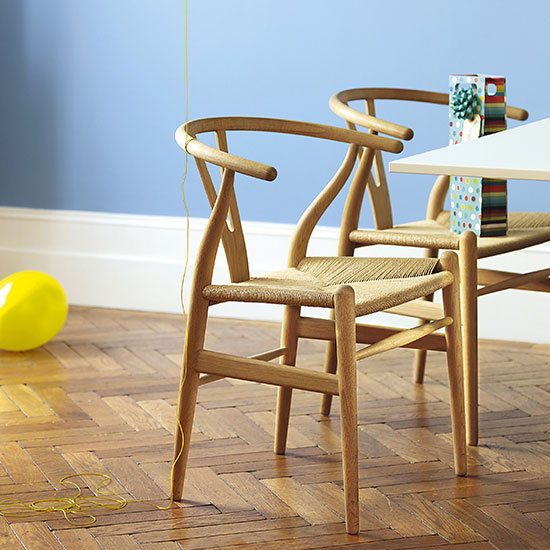Designer chairs: the coolest 5 ever
Take a seat and lust over these modern classics
Do you know your D.153.1 from your LCW? An iconic chair brings instant cred to any space, so it's worth investing in just one, in your lifetime. Here are Livingetc's favourite classics, accompanied by a few design facts to drop into dinner party conversation.

1. D.153.1 by Gio Ponti
As stories behind a piece of furniture go, there is none more reassuring than ‘designed for his own home'. So begins the tale of the D.153.1 chair by Giò Ponti. The architect, painter, teacher, and founder of magazine Domus created this slice of design heaven in 1953 for his apartment in Milan.
Ever-present in Ponti's work was the sense of the sheer magic of good design: ‘Enchantment, a useless thing, but as indispensable as bread', he once explained. This contemporary reworking of the D.153.1 is nothing if not enchanting. Made in satin brass and a buttery bi-colour leather (which replaces the original fabric), this designer chair is one of a seven-part series by Molteni&C in collaboration with the Ponti estate. Somewhere between reissue and reinterpretation, each piece is true to the original, but with an eye on modern production techniques. And given that the originals sell for a not-so-small fortune, this little number is starting to look like a wise investment too.

2. Wassily chair by Marcel Breuer
The phrase ‘get on your bike' has never been so apt. Hungarian designer Marcel Breuer first conceived his iconic Bauhaus design while admiring the tubular steel handlebars of his bicycle. As luck would have it, a German manufacturer had just perfected a process for making seamless steel tubing (without the need for a welded seal), so Breuer seized the chance to put his revolutionary ideas into practice. Initially, the chair's straps were made of fabric, but more recently, wire-mesh and leather options have proved just as popular. The Wassily has been in constant production (by brand Knoll) since the Fifties, fitting perfectly into interior schemes as other trends in furniture have come and gone. You might call it the ultimate easy rider...

3. Cité chair by Jean Prouvé
Not all designers choose to furnish their homes with their own products but this was exactly the case with French designer Jean Prouvé, whose low-slung Cité chair (originally created for student accomodation) was used on the veranda of his own house. Prouvé's background in metal work and industrial manufacturing was the backbone for his uniquely modern, clean and distinctive furniture; laid back and elegant, the Cité chair is considered an early masterpiece and is now produced by Vitra.
A committed socialist, Prouvé's fervid belief was that design could help to forge a better world; his political beliefs informed both his designs and their manufacture. It's slightly ironic, then, that he was dubbed by the NY Times as the ‘hedge fund manager's favourite furniture designer' (the rush to collect his work is known as 'Prouvemania'). His mass-produced pieces, originally designed for French schools, hospitals and universities, now reach record prices at auction.

4. LCW chair by Charles and Ray Eames
Like finding the cure for the common cold or a route to the East Indies, discovering the best way to shape plywood was a conundrum that plagued furniture designers at the beginning of the last century. In the 1930s, Charles Eames (with Eero Saarinen) made several attempts to create a single moulded shell chair, with mixed success. It was only he was seconded to make splints for injured airmen in WWII that his ideas took shape. His experience using compound curves of wood to mimic the shape of the human leg proved invaluable when Eames returned to design with his wife Ray, in 1945.
At a time when most domestic furniture was chunky, complex and heavily upholstered, the LCW (Lounge Chair Wood) was organic, ergonomic and just the kind of ‘honest design' that was to come to define the modernist movement. It still sells widely today, with a low-slung elegance that makes it ideal as a hall chair, or in lobbies. No wonder then, that Time magazine hailed the LCW as the best design of the 20th century. We think it's still looking good in the 21st too.

5. Wishbone chair by Hans Wegner
Think of unlikely duos that work despite their differences, and Hans Wegner's Wishbone chair is right up there with Walter Matthau and Jack Lemmon in The Odd Couple. Who would have imagined that ancient Eastern furniture would form the basis of a best-selling Scandi classic? But the Wishbone (aka the Y chair) actually evolved from Wegner's earlier Chinese chair, which had been inspired by portraits of well-heeled merchants on traditional perches. Although retailers' initial response to the elegant seat was lack lustre, trend-spotting consumers started snapping them up as fast as they could be made, and today annual production exceeds 17,000. So, like the mighty Ming dynasty, Wegner has left a legacy - of one wishbone you certainly wouldn't want to break.
Find more iconic design classics from Livingetc, click here.
Get the Ideal Home Newsletter
Sign up to our newsletter for style and decor inspiration, house makeovers, project advice and more.
******
-
 My go-to Ninja coffee machine is on sale for Easter weekend
My go-to Ninja coffee machine is on sale for Easter weekendIt makes coffee shop quality achievable at home
By Molly Cleary
-
 When to plant out annual flowering plants for vibrant, colourful garden borders – and give them the best start, according to experts
When to plant out annual flowering plants for vibrant, colourful garden borders – and give them the best start, according to expertsNot sure when to plant out annual flowering plants? We've got you covered...
By Kayleigh Dray
-
 I'm a kitchen decor editor and didn't like this tableware trend - until I saw H&M Home's designer-look plates
I'm a kitchen decor editor and didn't like this tableware trend - until I saw H&M Home's designer-look platesThey made it easy to justify a new crockery set
By Holly Cockburn